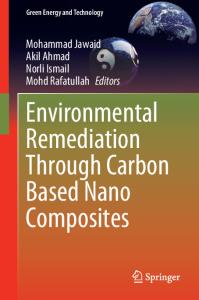Nanomaterials and Plant Potential
This book discusses the latest developments in plant-mediated fabrication of metal and metal-oxide nanoparticles, and their characterization by using a variety of modern techniques. It explores in detail the application of nanoparticles in drug delivery,
- PDF / 14,816,952 Bytes
- 597 Pages / 439.42 x 683.15 pts Page_size
- 54 Downloads / 323 Views
nomaterials and Plant Potential
Nanomaterials and Plant Potential
Azamal Husen • Muhammad Iqbal Editors
Nanomaterials and Plant Potential
Editors Azamal Husen Department of Biology College of Natural and Computational Sciences University of Gondar Gondar, Ethiopia
Muhammad Iqbal Department of Botany Faculty of Science Jamia Hamdard (Deemed University) New Delhi, India
ISBN 978-3-030-05568-4 ISBN 978-3-030-05569-1 (eBook) https://doi.org/10.1007/978-3-030-05569-1 Library of Congress Control Number: 2019930586 © Springer Nature Switzerland AG 2019 This work is subject to copyright. All rights are reserved by the Publisher, whether the whole or part of the material is concerned, specifically the rights of translation, reprinting, reuse of illustrations, recitation, broadcasting, reproduction on microfilms or in any other physical way, and transmission or information storage and retrieval, electronic adaptation, computer software, or by similar or dissimilar methodology now known or hereafter developed. The use of general descriptive names, registered names, trademarks, service marks, etc. in this publication does not imply, even in the absence of a specific statement, that such names are exempt from the relevant protective laws and regulations and therefore free for general use. The publisher, the authors, and the editors are safe to assume that the advice and information in this book are believed to be true and accurate at the date of publication. Neither the publisher nor the authors or the editors give a warranty, express or implied, with respect to the material contained herein or for any errors or omissions that may have been made. The publisher remains neutral with regard to jurisdictional claims in published maps and institutional affiliations. This Springer imprint is published by the registered company Springer Nature Switzerland AG The registered company address is: Gewerbestrasse 11, 6330 Cham, Switzerland
Preface
Various plants and plant parts are used for green synthesis of the metal and metal- oxide nanoparticles (NPs), as they contain metabolites such as alkaloids, flavonoids, phenols, terpenoids, alcohols, sugars, and proteins, which act as reducing agents to produce NPs and, in some cases, also as capping agents and stabilizers for NPs. Plants with either aroma or color in their leaves, flowers, or roots drew special attention because they all contain such chemicals that reduce the metal ions to metal NPs. The size and morphology of the metal and metal-oxide NPs are dependent on the biogenic-synthetic route, incubation time, temperature, concentration, and pH of the solution. Since the application of the metal and metal-oxide NPs on plant systems has begun only recently, little is known about their possible effects on plant growth, development, and productivity. Accumulation and translocation of NPs in plants and the consequent growth response and stress modulation in plant systems are yet to be understood fully. Plants responses to NPs may be positive or negative and vary with species
Data Loading...











